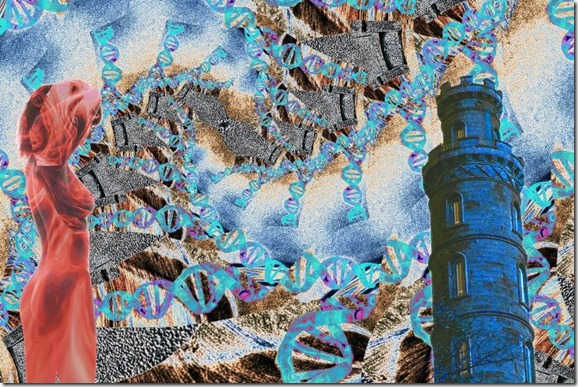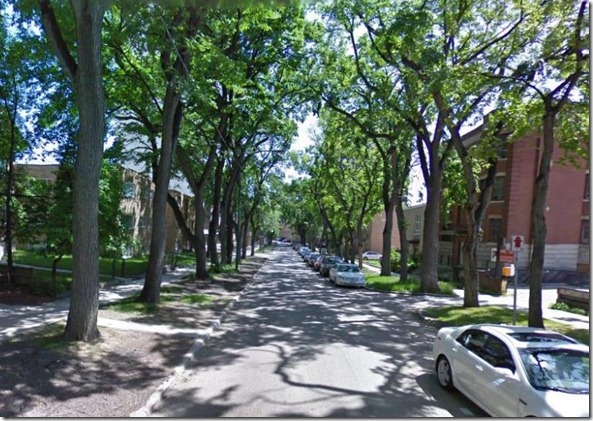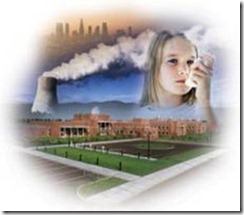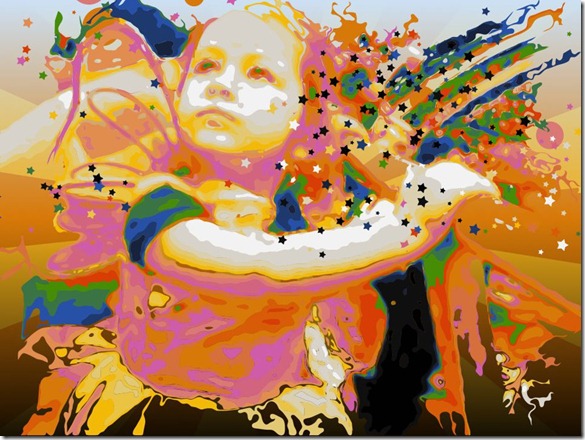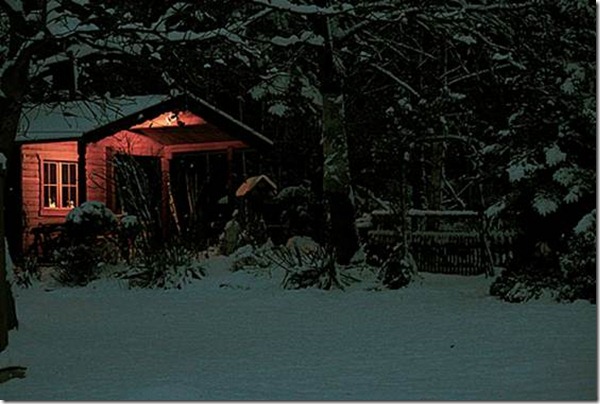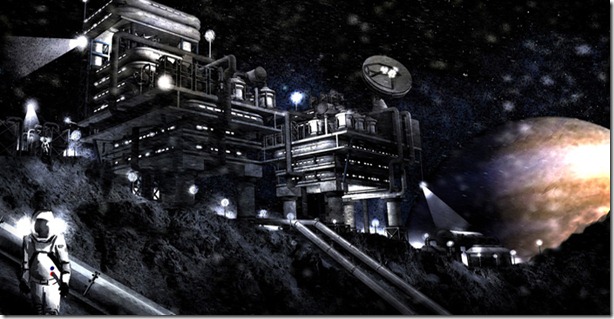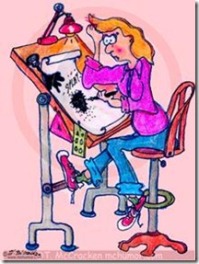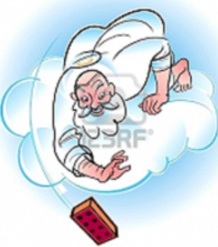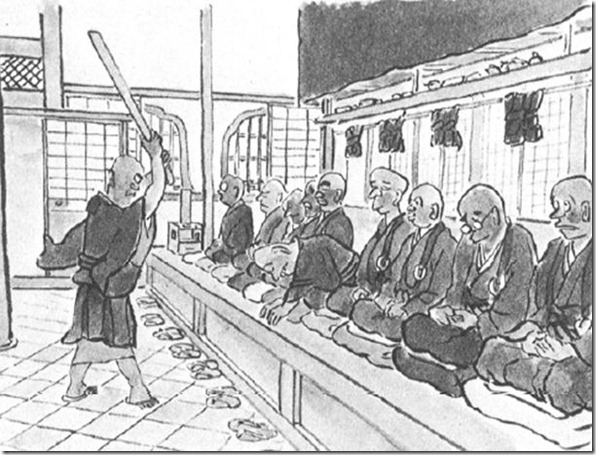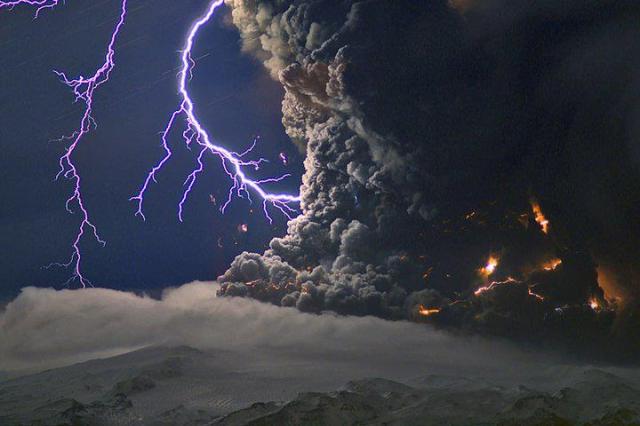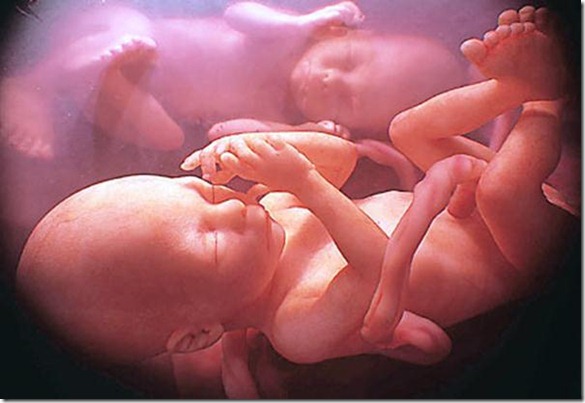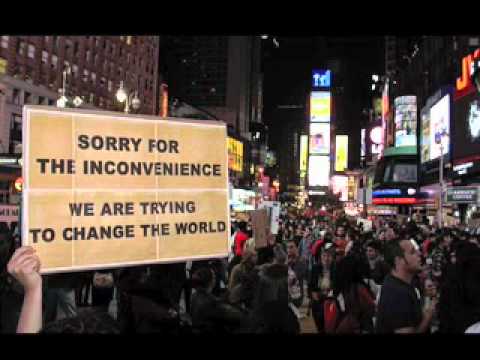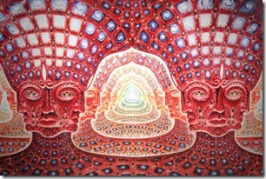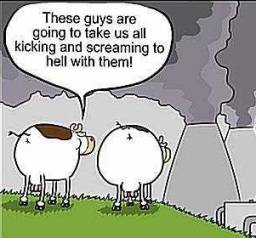Posts Tagged psychedelic
Drugs of Choice and Generational Cultures: Opposing Worlds – The WWII Generation and Boomers
Posted by sillymickel in activism, authenticity, being yourself, Class, Culture, Generations, globalrevolution, History, individualism, nonconform, occupywallstreet, philosophy, Politics, psychology, spirituality, uniqueness, US on June 27, 2012
Culture War, Class War Chapter Three:
Drugs of Choice and Generational Cultures – Opposing Worlds
Alcohol, Nicotine, and World War Two Generation: Driving–Wars and Culture–”Under the Influence”
 Culture War, Class War Chapter Three:
Culture War, Class War Chapter Three:
Drugs of Choice and Generational Cultures – Opposing Worlds
Drugs and Generations
In continuing our exploration of cultural and generational conflict and the Matrix evolving out of that, it is instructive to focus on an aspect of that conflict that has burned with controversy—drug use. Since drugs affect consciousness and personality and different drugs have different effects, looking at the polar opposite views on consciousness altering substances is especially fruitful.

So for additional perspective on the topic of culture war and the processes of cultural change that have gone on since the 1950s between and because of the different generations involved, let us consider the relation between particular drugs, with each their own unique effects on consciousness, and the generation that uses them…or, one might say…between the prevailing drug use of a time and the generational culture that is created.
This chapter—“Opposing Worlds“—deals with the World War Two and the Sixties Generations and their drug use. The next chapter—“Concocted Worlds“—focuses on the generations since—Generation X and Millennial—and their preferences and cultural profiles.
To begin, I present some salient facts for your consideration:
Drugs and Consciousnesses
Drug Research, Public and Private
 While it is common to state that drugs act differently on different people—especially, when referring to the less-mainstream, more esoteric ones, whose effects have not been experienced by the majority of people as yet—there are some obvious generalizations that can be made. For example, we would not say that we could not comment on the effects of alcohol. Its effects on the neurochemistry of the brain and on consciousness have been fully and scientifically explored, and of course its effects have been experienced by nearly everyone in our culture. Similarly, though research on the effects of the less-mainstream drugs have not been as thoroughly explored and documented, there is, in fact, quite an extensive body of scientific and popular literature on this, especially over the last half century.
While it is common to state that drugs act differently on different people—especially, when referring to the less-mainstream, more esoteric ones, whose effects have not been experienced by the majority of people as yet—there are some obvious generalizations that can be made. For example, we would not say that we could not comment on the effects of alcohol. Its effects on the neurochemistry of the brain and on consciousness have been fully and scientifically explored, and of course its effects have been experienced by nearly everyone in our culture. Similarly, though research on the effects of the less-mainstream drugs have not been as thoroughly explored and documented, there is, in fact, quite an extensive body of scientific and popular literature on this, especially over the last half century.
Because of the widespread drug use of the Sixties Generation, massive amounts of money have been spent to try to determine how and in what way people are affected by the substances they used.  Though this research has largely been driven by a World-War-Two-Generation desire to find fault with the drugs, so that the research is biased toward looking for and of course then coming up with findings that would be considered negative, still, the research has a good deal of useful information if you can read “between the lines,” so to speak.
Though this research has largely been driven by a World-War-Two-Generation desire to find fault with the drugs, so that the research is biased toward looking for and of course then coming up with findings that would be considered negative, still, the research has a good deal of useful information if you can read “between the lines,” so to speak.
Alongside mainstream research there is also a considerable body of privately funded research, which is therefore less biased, as well as a considerable body of anecdotal research on drug effects. By this last I mean that there is a good deal of literature detailing what people have said they have experienced while under the influence of the various substances.
What follows is based on study of both kinds of research described above, as well as from reports by experiencers related to the author. Last but not least, it is a result of the fact that this author is a member of the Sixties Generation, born smack in the middle, in 1950, and it may be concluded that I share some of the characteristics of my generation. Enough said, or, see below.
Drug Effects—Alcohol
Alcohol numbs pain and creates a euphoric state by blotting out higher-order cerebral-cortical functioning. It reduces access to memory, diminishes physiomotor skills, blocks anxiety, depression, and nervousness.

overconfident, oblivious to danger
These effects alone make it the perfect drug to create and sustain a defensive style centered on denial. Indeed, the drug can be said to “block out reality” in that one can be unaware of aspects of reality that could end up being dangerous and harmful while simultaneously enhancing the positive aspects of reality in an almost manic way. One can feel unafraid and unaware in the face of pain and danger, as well as one can feel confident and overoptimistic in terms of one’s evaluations of oneself, one’s capabilities, and the potential consequences of one’s actions.
We can say these are blocks to reality in that very often reality intervenes, through accidents, adverse social reactions, and the reevaluation of grandiose schemes afterwards “in the cold light of sobriety” in which they are seen to be unrealistic in that they did not take into account other aspects which would prevent their success.
There have historically been entire generations (see below) as well as individuals during any period who have kept themselves “under the influence” pretty much all the time, sometimes considering it to be the natural state. For these folks who rarely venture  into that state where decisions and plans are evaluated in a sober “cold light,” we know that the effect is a blocking out of reality in that the effect of acting on the drug-influenced decisions and schemes is most often failure. It is actually disastrous, or way or the other, a good deal of the time more than would be the case following soberly decided acts. It can result in acts leading to harm to the person, to others, or to the physical or social environment.
into that state where decisions and plans are evaluated in a sober “cold light,” we know that the effect is a blocking out of reality in that the effect of acting on the drug-influenced decisions and schemes is most often failure. It is actually disastrous, or way or the other, a good deal of the time more than would be the case following soberly decided acts. It can result in acts leading to harm to the person, to others, or to the physical or social environment.
Drug Effects—Nicotine
There are three relevant effects of nicotine: It is a stimulant, it causes an increase in heart rate and blood pressure and can cause sweating from the speeding up of metabolism. This allows it to be used to aid in working situations, where continued or repetitive action is required, beyond what a person would normally wish to do. However, it is not useful in, say, sporting types of action in that another effect of nicotine is a diminished physio-motor capacity. For example, people will sometimes complain of feelings of “wooziness” and/or its affecting one’s sense of balance, particularly if they have taken enough of the drug or are unaccustomed to it.
However, it is not useful in, say, sporting types of action in that another effect of nicotine is a diminished physio-motor capacity. For example, people will sometimes complain of feelings of “wooziness” and/or its affecting one’s sense of balance, particularly if they have taken enough of the drug or are unaccustomed to it.
Nicotine can paradoxically create a depressing effect. This effect on the body can be felt as a relaxation, and sometimes, but only at its onset, as a relatively short lasting feeling of a surrounding warm numbness, which is sometimes termed a buzz. Thus a person can feel relaxed, sometimes to the point of mental depression, but simultaneously be metabolically stimulated. These effects are related to certain psychological effects of taking the drug, if it is taken in the form of smoked tobacco, as in cigarette or pipe smoking.
 Janov has pointed out how a cigarette is the perfect breast substitute. Not only does it engage the oral sensory gestalt, but the breathing in of a warm and full air simulates the taking in of warm mother’s milk. Indeed, people who smoke have often, in psychotherapy, discovered that they have severe deprivations around nursing during the neonatal and infancy periods. The appeal of cigarette smoking, then, for these people lies in its ability to both engage and to some degree temporarily satisfy the oral craving carried over from infancy as well as to re-create both the desired warm relaxation, which the neonate or infant would have experienced if he or she would have been tenderly held and breastfed, as well as the depression/sadness that actually was experienced in infancy because the need to nurse was not satisfied.
Janov has pointed out how a cigarette is the perfect breast substitute. Not only does it engage the oral sensory gestalt, but the breathing in of a warm and full air simulates the taking in of warm mother’s milk. Indeed, people who smoke have often, in psychotherapy, discovered that they have severe deprivations around nursing during the neonatal and infancy periods. The appeal of cigarette smoking, then, for these people lies in its ability to both engage and to some degree temporarily satisfy the oral craving carried over from infancy as well as to re-create both the desired warm relaxation, which the neonate or infant would have experienced if he or she would have been tenderly held and breastfed, as well as the depression/sadness that actually was experienced in infancy because the need to nurse was not satisfied.
We will see again and again this interesting pattern in drug effects, which helps to explain their appeal, in that very often they both assuage an underlying Pain as well as re-create it, either simultaneously or at different times of the drug experience. Primal and other psychologists have learned, of course, that those are the two motivations that emanate from early Pain.  That is, that a person is driven both to run away from and avoid her or his Pain, yet “the body” (as it is sometimes said) pushes the person to re-create the original situation, over and over again, in what may be considered the psyche’s way of trying to resolve it. Put simply, we are psychologically designed to be forever faced with our problems until we handle them…in the case of primal pain, we stay stuck in the patterns and sensations of our past traumas until we resolve them.
That is, that a person is driven both to run away from and avoid her or his Pain, yet “the body” (as it is sometimes said) pushes the person to re-create the original situation, over and over again, in what may be considered the psyche’s way of trying to resolve it. Put simply, we are psychologically designed to be forever faced with our problems until we handle them…in the case of primal pain, we stay stuck in the patterns and sensations of our past traumas until we resolve them.
A final effect of cigarette use is its ability to repress anger. Considering the above, it can be seen why cigarette smoking would be related to an “oral rage,” which is how some psychologists have described one of the emotional reactions to nursing deprivation. Stated plainly, a baby would be extremely pissed-off to not get the comforting and nourishing experience of breastfeeding that a human is biologically designed to crave. This anger remains inside, like all primal emotions, and is easily and often brought to consciousness, triggered by the frustrations of normal life, if nothing else.

However, the physical and psychological effects of sucking in a “smoke” are those of (psychologically) sucking back, or inside, one’s feelings and anger or reversing the natural push of anger which is to lash outwardly; they are also that of a kind of holding or controlling of one’s breath, which is also related to the attempt to hold back or control one’s anger in that breathing and emotions are connected (let’s not get into that just here); of replacing the urge to anger with the soothing warm intake described above, the deprivation of which (in nursing) helped to cause the rage in the first place; and, last but not least, to create a state of consciousness altered from the one of anger—one in which feelings are hazily confused and not clear and in which thinking and memory are somewhat impaired.
Drugs, History, and Cultures
Medieval Times, Drunken Adolescents at War
 The Hundred Years’ War between England and France during the Middle Ages was fought by adolescents whose primary beverage was wine. In fact, there was one campaign in which England was raiding and advancing into France which turned into a precipitous retreat back to England. Because the French turned them back, stopped them? No. There was little resistance to their advance. However, they did run out of wine! Unable to acquire the needed wine in France (for what reason, I do not know), they could not continue.
The Hundred Years’ War between England and France during the Middle Ages was fought by adolescents whose primary beverage was wine. In fact, there was one campaign in which England was raiding and advancing into France which turned into a precipitous retreat back to England. Because the French turned them back, stopped them? No. There was little resistance to their advance. However, they did run out of wine! Unable to acquire the needed wine in France (for what reason, I do not know), they could not continue.
History also reports that The Hundred Years’ War was ordered and commanded, oftentimes, by royalty and kings in their teens, who considered a daylong, somewhat intoxicated state to be normal; and it was fought by drunken adolescents and teenagers for the most part.
911 and Phantom WMDs, Gulf of Tonkin, Pearl Harbor, Sinking of The Maine…But at the Start There Was the Wyoming Valley “Massacre”
I have mentioned how The Hundred Years’ War was fought by intoxicated teenagers. It can be added that other wars, including America’s own War of Independence were fought by inebriated soldiers. For example, “in a severe battle, General Putnam, who was almost perforated with bullets, complained most of all, that a shot had passed through his canteen and spilt all his rum….”
Moreover, major events in colonial times were brought about by alcohol-saturated actors. The Wyoming Valley Massacre, in which a handful of colonists were killed by Native Americans, was precipitous in the American’s involvement in the extermination of established Native American cultures and nations—Mohawk, Seneca, especially the Iroquois.  The reaction to the “massacre” was a crusade up and around the Hudson Valley in which the Iroquois, among others, was largely eliminated from the face of the Earth. “If they surrendered, they were killed…if they fled, they were killed,” it was said of the nature of this campaign.
The reaction to the “massacre” was a crusade up and around the Hudson Valley in which the Iroquois, among others, was largely eliminated from the face of the Earth. “If they surrendered, they were killed…if they fled, they were killed,” it was said of the nature of this campaign.
What is not very well known is the nature of the precipitating event, the Wyoming Valley Massacre. The true story is that while a number of adult settlers in their prime were off fighting in the Revolutionary war, a group of older, elderly, and fringe citizens gathered one night. Under the heavy influence of spirits the group riled each other up with fiery rhetoric against the nearby Native Americans.
 This resulted in a hastily put together, drunken assault against their native neighbors. Naturally these elderly inebriated attackers did not fare very well in their attempt, and the Native’s response had the colonists retreating to their fort. Not everyone made it. About four were captured by Natives. It is said the stragglers’ screams could be heard that night from inside the wall of the fort as they were killed by the Native American defenders.
This resulted in a hastily put together, drunken assault against their native neighbors. Naturally these elderly inebriated attackers did not fare very well in their attempt, and the Native’s response had the colonists retreating to their fort. Not everyone made it. About four were captured by Natives. It is said the stragglers’ screams could be heard that night from inside the wall of the fort as they were killed by the Native American defenders.
This “massacre” was built up and slanted against Native Americans for propaganda reasons to garner the colonists’ full-handed participation in the war, with its extermination of Native peoples, as mentioned. It was quite successful in accomplishing that. Consequently, also, the true version of the events that led to such genocide would never be related in history books. And who would ever want to believe that the formative events of great nations…or the calamitous, genocidal events of other nations…could be instigated by a rash action from a small group of idiotic old men in a full-on state of intoxication?
World-War-Two Generation, Driving—Wars and Culture—“Under the Influence”
 The World-War-Two Generation grew up in a time in which alcohol use was considered fashionable and elegant. It was common and acceptable for men to carry in their shirt or coat pockets flasks of potent whiskey or other hard liquor, from which they could publicly imbibe a swallow here and there throughout the day. When the World-War-Two Generation came of age, cigarette smoking also became fashionable.
The World-War-Two Generation grew up in a time in which alcohol use was considered fashionable and elegant. It was common and acceptable for men to carry in their shirt or coat pockets flasks of potent whiskey or other hard liquor, from which they could publicly imbibe a swallow here and there throughout the day. When the World-War-Two Generation came of age, cigarette smoking also became fashionable.
We can see evidence of both of these in the movies that were produced in the Thirties, Forties, and Fifties. Any unpleasant occurrence or announcement could be followed by “I need a drink” or “Sounds like you could use a drink.” And offering a drink of hard liquor was considered the first rite in the normal ritual of hospitality. Also, offering someone a cigarette and/or offering to light another’s cigarette were considered a normal part of genteel behavior.

Elegant accouterments accompanied these rituals as well. Ornate, elegant, and often finely crafted metal flasks were purchased and used. In the same way, elegant crystal and glass containers for holding the liquors as well as elaborate and ritually designed glasses into which the alcoholic beverages were poured were commonly owned and used in genteel culture.  It was considered fashionable to have a “bar” area in one’s living room containing these liquors, each in separate crystal containers, and the glasses for serving them.
It was considered fashionable to have a “bar” area in one’s living room containing these liquors, each in separate crystal containers, and the glasses for serving them.
Many a conversation in the movies of the era were shown to be conducted at or near these home bars, following upon the alcoholic bonding ritual of pouring and imbibing the drink. This ritual conversational imbibing of a beverage has its analogies in the water-cooler, coffee klatch, and coffee/espresso-house rituals of other eras and subcultures.

Pointing out the normality and ritualizing of alcohol use in this era is important because it is an indication of the pervasiveness, at any time of day, of the state of consciousness—i.e., intoxication—that this potent drug produces. Since this cultural behavior is still somewhat with us so that its anomalous quality may not be readily apparent, it may be helpful to keep in mind that current drunken driving laws of nearly all states would apply to everyone of that era involving themselves in only a modicum of that alcoholic ritual.

That is to say, those folks, imbibing only one drink, would be considered “drunk” by our standards today, and sufficiently into an altered state of consciousness as to warrant their receiving severe criminal penalties, including jail time, should they put themselves into the driver’s seat of a car.
Yet in that era, normal cultural, business, and social intercourse was often conducted in such a state. Heady decisions concerning war, peace, and everything else were influenced by this culturally accepted drug use.
World War Two, therefore, was conducted and fought by a generation who grew up to believe that alcohol and cigarettes (nicotine) were an acceptable answer to unpleasantness—whether inside or outside of themselves. Alongside this and supporting it were an attitude and beliefs that negative—i.e., unpleasant—emotions and feelings were harmful and should be kept out of consciousness.
Thus, denial was the predominant defense in use; and it is no coincidence that “positive thinking” (popularized by the late Norman Vincent Peale), which is the keeping out of negative thoughts and the striving to focus always on positive ones, became such a rage near the end of their era—the Fifties, early Sixties. [Footnote 1]
Drugs and Generations, Fifties Generation: Marijuana Effects, The Beats, Phoney Baloney, “YOU Do It!”
The Beats: Pot; Peripatetic, Apathetic Mind; Seeing “Plastic” People
Drug Effects—Marijuana
Initially
The effects of marijuana are more diverse than those of alcohol and nicotine. Yet there are a number of things that can be said about its effects in general. The effects of marijuana are more subtle than the two drugs mentioned thus far. In fact, there are some people who cannot feel the effects of marijuana; and very often it takes several times of using it before one begins to realize its effects. Yet it is not an ineffectual or weak drug by any means.

The reasons why some people cannot feel marijuana’s effects appear to be related to their having very defended personality types, or,  one might say they have a great deal of repression. The reason this would affect their ability to feel the drug’s effects are easy to understand when we consider the fact that repression of feelings of trauma would include repression of the ability to feel things in general. A repressed person is a more neurotic, more defended person; and more defended persons are basically defending against painful feelings. But feelings cannot be separated and to repress feelings of Pain means also to repress the ability to be sensitive to other feelings. Hence highly defended or repressed persons can smoke a great deal of marijuana and yet not “get off” or they may just feel feelings of relaxation.
one might say they have a great deal of repression. The reason this would affect their ability to feel the drug’s effects are easy to understand when we consider the fact that repression of feelings of trauma would include repression of the ability to feel things in general. A repressed person is a more neurotic, more defended person; and more defended persons are basically defending against painful feelings. But feelings cannot be separated and to repress feelings of Pain means also to repress the ability to be sensitive to other feelings. Hence highly defended or repressed persons can smoke a great deal of marijuana and yet not “get off” or they may just feel feelings of relaxation.
Janov has said that marijuana acts to kind of “bend” defenses, which allows repressed feelings to surface, for those who are not in the category described above, which would include the majority of people. Since we all have  some degree of primal pain, we all have defenses to being fully feeling, so the effect of marijuana for the majority of people is to open them to some of the pleasurable feelings that have gotten repressed along with the repression of Pain.
some degree of primal pain, we all have defenses to being fully feeling, so the effect of marijuana for the majority of people is to open them to some of the pleasurable feelings that have gotten repressed along with the repression of Pain.
Therefore some widely noted effects of marijuana concern its enhancing sensory ability and therefore pleasure. Listening to music, being in Nature, watching a movie, or sex can all be quite enhanced and different while experienced under the influence of marijuana. Aspects of these experiences that were always there but were never noticed can be explored. One can seem to be experiencing something on many levels at once, or to be fully immersed in the experience so that aspects of it that formerly seemed more “walled off” from one can seem almost tangible in one’s ability to experience it; one can become so immersed in experience that complexities of it can be taken in and enjoyed, which one never even noticed before. [Footnote 2]
 Part of the reason for this type of effect of “pot” is that it lowers blood sugar and thus causes the normal cortical defenses to be less effective in blocking out experience. Related to this is a feeling of timelessness—a feeling of being in the Now—which can also be related to the diminished cortical functioning which is goal-oriented and related to linear time. Which brings up another effect: It reduces one’s feelings of needs to achieve or to be goal- or achievement-oriented. The sensory world is what is initially enhanced in the course of one’s experience with this drug; and the experience of the sensory world in its own right does not engage more complex, more “inward,” and more individually unique goals, feelings, scripts, dramas, scenarios, or motivations.
Part of the reason for this type of effect of “pot” is that it lowers blood sugar and thus causes the normal cortical defenses to be less effective in blocking out experience. Related to this is a feeling of timelessness—a feeling of being in the Now—which can also be related to the diminished cortical functioning which is goal-oriented and related to linear time. Which brings up another effect: It reduces one’s feelings of needs to achieve or to be goal- or achievement-oriented. The sensory world is what is initially enhanced in the course of one’s experience with this drug; and the experience of the sensory world in its own right does not engage more complex, more “inward,” and more individually unique goals, feelings, scripts, dramas, scenarios, or motivations.
Eventually
 Robert Masters and Jean Houston, in their book, The Varieties of Psychedelic Experience, provided an architecture of the psyche, derived from their study of the effects of LSD, that is useful in understanding what can happen eventually with continued use of marijuana. They conducted “depth soundings” of the LSD experience and discovered that there were four levels of the experience: the sensory, the recollective-analytic, the symbolic, and the integral. While marijuana is not as powerful in its effects as LSD, it has a similar effect on consciousness; one might say it acts in the same direction as LSD. In contrast to drugs like alcohol and nicotine, which serve to aid repression and to help to numb or reduce one’s perception of both inner and outer reality, both marijuana and LSD have the effect of opening or enhancing one’s awareness of inner and outer reality.
Robert Masters and Jean Houston, in their book, The Varieties of Psychedelic Experience, provided an architecture of the psyche, derived from their study of the effects of LSD, that is useful in understanding what can happen eventually with continued use of marijuana. They conducted “depth soundings” of the LSD experience and discovered that there were four levels of the experience: the sensory, the recollective-analytic, the symbolic, and the integral. While marijuana is not as powerful in its effects as LSD, it has a similar effect on consciousness; one might say it acts in the same direction as LSD. In contrast to drugs like alcohol and nicotine, which serve to aid repression and to help to numb or reduce one’s perception of both inner and outer reality, both marijuana and LSD have the effect of opening or enhancing one’s awareness of inner and outer reality.
 However, the effects of marijuana are complex because they do not as consistently open one to inner realities as does LSD. Pot opens or enhances one’s experience of the sensory world initially, and as long as it does just this it can be used as a drug of avoidance of painful (inner) reality just like alcohol and nicotine do. That is, one with sufficient repression and defenses can use marijuana to flee from inner pain, depression, or whatever, into an enhanced, pleasurable sensory world that does not trigger one’s pain. At this stage, only, pot can be used to defend against pain and can be psychologically addictive in providing a palliative to pain. Once again, it can do this because it serves only to “bend” not to bust one’s defenses against one’s pain.
However, the effects of marijuana are complex because they do not as consistently open one to inner realities as does LSD. Pot opens or enhances one’s experience of the sensory world initially, and as long as it does just this it can be used as a drug of avoidance of painful (inner) reality just like alcohol and nicotine do. That is, one with sufficient repression and defenses can use marijuana to flee from inner pain, depression, or whatever, into an enhanced, pleasurable sensory world that does not trigger one’s pain. At this stage, only, pot can be used to defend against pain and can be psychologically addictive in providing a palliative to pain. Once again, it can do this because it serves only to “bend” not to bust one’s defenses against one’s pain.
Yet for some people this effect of marijuana changes with continued drug use.  It is as if the continued “bending” of defenses can eventually lead to a “loosening” of them, and with that loosening comes the deeper level of experience described by Masters and Houston and termed the recollective-analytic. At this level, enhanced sensory experience opens the door, so to speak, to enhanced inner awareness. This enhanced inner awareness can include the awareness of the underlying motivations of oneself and others, and this is mostly not pretty.
It is as if the continued “bending” of defenses can eventually lead to a “loosening” of them, and with that loosening comes the deeper level of experience described by Masters and Houston and termed the recollective-analytic. At this level, enhanced sensory experience opens the door, so to speak, to enhanced inner awareness. This enhanced inner awareness can include the awareness of the underlying motivations of oneself and others, and this is mostly not pretty.
 Because the normal person is motivated mostly by past, or primal, pains or traumas and is acting out scripts or roles that are pathetic attempts to re-create or struggle with events that happened a long time ago, the normal person is not really IN the present.
Because the normal person is motivated mostly by past, or primal, pains or traumas and is acting out scripts or roles that are pathetic attempts to re-create or struggle with events that happened a long time ago, the normal person is not really IN the present.  The person is, as the great religions have described it, in ignorance, in samsara , in dukha, and is basically unreal. The person, as humanistic psychologists have described, is inauthentic and is acting out games or scripts, which they are totally unconscious of.
The person is, as the great religions have described it, in ignorance, in samsara , in dukha, and is basically unreal. The person, as humanistic psychologists have described, is inauthentic and is acting out games or scripts, which they are totally unconscious of.  They have identified with these scripts, roles, goals, and motivations—the outgrowth of a completely unique set of past experiences of pain and trauma—and haven’t a clue as to their arbitrary character, let alone of the fact that other people are similarly acting out their own unique roles which are just as arbitrary and, well yes actually, pathetic.
They have identified with these scripts, roles, goals, and motivations—the outgrowth of a completely unique set of past experiences of pain and trauma—and haven’t a clue as to their arbitrary character, let alone of the fact that other people are similarly acting out their own unique roles which are just as arbitrary and, well yes actually, pathetic.
However, pot, just like LSD, can eventually (sometimes even initially for persons who are, perhaps because they are young, or whatever, are unusually undefended, more sensitive, and more open to actual reality) open one to the horrifying perception of the inauthentic and unreal nature of ordinary social behavior. In this state of heightened awareness of the inner world of oneself and others, one perceives oneself and others as puppets or windup dolls, pathetically seeking to satisfy very old needs, which are totally irrelevant to the present context, with others who are similarly and robotlike also seeking to satisfy very different past deprivations. In common parlance, it is said that most actions of people are just “games.” So, part of the horrifying nature of this perception, on the recollective-analytic level of awareness, is that indeed people are not truly relating to each other at all, that they are like people trapped in spacesuits trying to communicate with each other through the layers of barriers between them. [Footnote 3]
In this state of heightened awareness of the inner world of oneself and others, one perceives oneself and others as puppets or windup dolls, pathetically seeking to satisfy very old needs, which are totally irrelevant to the present context, with others who are similarly and robotlike also seeking to satisfy very different past deprivations. In common parlance, it is said that most actions of people are just “games.” So, part of the horrifying nature of this perception, on the recollective-analytic level of awareness, is that indeed people are not truly relating to each other at all, that they are like people trapped in spacesuits trying to communicate with each other through the layers of barriers between them. [Footnote 3] 
What follows from this perception is the conclusion that people are basically phony, or plastic; that life is unreal; that normal motivations in pursuit of normal social values such as achievement, status/popularity, and pleasing appearance are meaningless rituals—games—that are totally irrelevant to the true nature of one’s being or reality; and that one is trapped in this prison of unconscious scripts, with no chance of release or true perception of reality.
The “Beats” – “Phoney Baloney,” So, “YOU do it!”
 The “Beat Generation” of the Fifties used marijuana and caffeine, predominantly. Their culture included the rise of existential belief, the glorification and poetification of angst, and the belief that their contemporary society was characterized by alienation, conformism, inauthenticity, and, most tellingly, “phoniness.” The normal life of the World-War-Two
The “Beat Generation” of the Fifties used marijuana and caffeine, predominantly. Their culture included the rise of existential belief, the glorification and poetification of angst, and the belief that their contemporary society was characterized by alienation, conformism, inauthenticity, and, most tellingly, “phoniness.” The normal life of the World-War-Two  Generation was seen as a “rat race,” motivated by such high ideals (sarcasm intended) as “keeping up with the Joneses,” and pervasive materialism and consumerism.
Generation was seen as a “rat race,” motivated by such high ideals (sarcasm intended) as “keeping up with the Joneses,” and pervasive materialism and consumerism.
Yet activism was not the Beat Generation’s response to this perceived negative social context, as it would be only a generation later. Passivism, apathy, pessimism, and defeatism were the most common attitudes expressed. This is what one would expect as a result of marijuana use.
Nonetheless, art was deemed a weapon, however impotent, with which to rail against what seemed an overwhelming, huge mainstream ignorance or unconsciousness. So the only apparent activism of that time is found in rebellious poetry, folk music, and fine arts of all kinds, especially literature, theater, painting, and some film.
Psychedelic Generation, the Sixties – “Breaking on Through to that Other Side” … Authenticity
Drugs and Generations: Drug Effects, LSD and “My Generation”
Drugs and Generations
Drug Effects—LSD
 The preeminent researcher on the effects of LSD on consciousness is, without question, Stanislav Grof. In his many works, he concurs with Masters and Houston’s early work that the initial phases of psychedelic experience are predominantly enhanced sensory awareness. It is this type of experience that is usually related to the use of LSD as when the experience is expressed in colorful and swirling images, which has been called psychedelic art. And for many people who used LSD, the experience remained on this level of surface, enhanced sensory awareness. Thus they could use it for “recreational” purposes.
The preeminent researcher on the effects of LSD on consciousness is, without question, Stanislav Grof. In his many works, he concurs with Masters and Houston’s early work that the initial phases of psychedelic experience are predominantly enhanced sensory awareness. It is this type of experience that is usually related to the use of LSD as when the experience is expressed in colorful and swirling images, which has been called psychedelic art. And for many people who used LSD, the experience remained on this level of surface, enhanced sensory awareness. Thus they could use it for “recreational” purposes.
But more often with LSD people accessed deeper levels of the mind, so that the recollective-analytic (Grof calls it the biographical or psychodynamic level) is reached, as well as levels beyond it. These levels were accessed even when the drug was used “recreationally,” because of the relative potency of the drug as compared with marijuana.
So it was that while Grof and other researchers like Masters and Houston were studying the drugs effects in controlled settings and with sessions guided by researchers who had experience with accessing deeper levels of the experience (as, for example, Grof himself), there was some degree of access of the deeper levels of the experience even by people using it in uncontrolled situations and with no guidance. It if for this reason that there were some calamities that occurred under the influence of the drug, which gave it the bad reputation that caused it to be banned. Yet for every disaster, there were many more whose experience of LSD was transformative, simply due to the fact that, even without a guide, the psyche’s normal tendency is toward growth and resolution; so, many people were able to flow with and be taken to deeper, more transformative levels of the experience.
It if for this reason that there were some calamities that occurred under the influence of the drug, which gave it the bad reputation that caused it to be banned. Yet for every disaster, there were many more whose experience of LSD was transformative, simply due to the fact that, even without a guide, the psyche’s normal tendency is toward growth and resolution; so, many people were able to flow with and be taken to deeper, more transformative levels of the experience.
For example, Stanislav Grof terms the third level of psychedelic experience the perinatal, meaning “surrounding birth.” It is equivalent to what Masters and Houston termed the symbolic level—the difference being due to the fact that perinatal material is initially experienced in highly symbolic ways,  and it is only in later sessions with the drug that the birth material becomes more apparent. Since Masters and Houston’s research method was to study the effects of one session of the drug on over two hundred subjects and Grof’s method included its use with some individuals over a number of sessions, it is understandable why Masters and Houston did not discover the birth material laced through the encounters with their “symbolic” level. But beyond the symbolic level the researchers concur once again, with Masters and Houston calling the deepest level integral, and describing a number and variety of spiritual experiences that can happen at that level, and Grof terming the same level the transpersonal , and presenting in exquisite detail in his works a vast array of “spiritual” type experiences at that level.
and it is only in later sessions with the drug that the birth material becomes more apparent. Since Masters and Houston’s research method was to study the effects of one session of the drug on over two hundred subjects and Grof’s method included its use with some individuals over a number of sessions, it is understandable why Masters and Houston did not discover the birth material laced through the encounters with their “symbolic” level. But beyond the symbolic level the researchers concur once again, with Masters and Houston calling the deepest level integral, and describing a number and variety of spiritual experiences that can happen at that level, and Grof terming the same level the transpersonal , and presenting in exquisite detail in his works a vast array of “spiritual” type experiences at that level.
With this in mind, I wish to point out that the Sixties Generation did not know of these levels  and, for the most part, were totally unaware of the research that was coming up with these typographies or architectures of the psyche, or of at least the drug experience.
and, for the most part, were totally unaware of the research that was coming up with these typographies or architectures of the psyche, or of at least the drug experience.  Nevertheless, those of us who lived through that period and either participated in LSD use or heard the stories of psychedelic experiencers can attest that transformative spiritual experiences were quite common, even when the drug was used just for the “fun” sensory part, and
Nevertheless, those of us who lived through that period and either participated in LSD use or heard the stories of psychedelic experiencers can attest that transformative spiritual experiences were quite common, even when the drug was used just for the “fun” sensory part, and  people also described experiences of curling up in fetal position and reliving their births, long before anyone even heard the term perinatal. As concerns the spiritual level, it was not uncommon to hear of people who saw Jesus, or who went to a place they could only describe as “heaven,” and this is only the tip of the iceberg in terms of the varieties of spiritual experiences that were had.
people also described experiences of curling up in fetal position and reliving their births, long before anyone even heard the term perinatal. As concerns the spiritual level, it was not uncommon to hear of people who saw Jesus, or who went to a place they could only describe as “heaven,” and this is only the tip of the iceberg in terms of the varieties of spiritual experiences that were had.
For our purposes here, however, it is important to keep in mind that LSD had the capacity to take one to deeper realities than the horrifying recollective-analytic one. One might say that the recollective-analytic perception is a cognitive view, an intellectual view, or an existential view, and it is certainly an alienated one; but that most of all it lacks the aspect of “the heart.”  In other words, it is only when one goes deeper into the psyche and “feels” the Pain of that estrangement, or in psychedelic terms goes deeper into the actual reliving of the traumas that caused the creation of those alienating scripts (as happens on LSD when the biographical or psychodynamic level is reached; and even more so when the perinatal level is worked through, relived), that one can go beyond the horrifying reality of estrangement to a reality in which one’s “heart” is opened and one can catch a glimpse of a reality beyond the normal one—one in which we are all spiritually connected, in Love.
In other words, it is only when one goes deeper into the psyche and “feels” the Pain of that estrangement, or in psychedelic terms goes deeper into the actual reliving of the traumas that caused the creation of those alienating scripts (as happens on LSD when the biographical or psychodynamic level is reached; and even more so when the perinatal level is worked through, relived), that one can go beyond the horrifying reality of estrangement to a reality in which one’s “heart” is opened and one can catch a glimpse of a reality beyond the normal one—one in which we are all spiritually connected, in Love.
 It is significant to point out that LSD has this capacity beyond the use of pot so we might understand the differences between the Beat Generation’s reaction to their perception of the unreality of existence, obtained in their use of marijuana, and the Sixties Generation’s quite different reaction to that perception of social phoniness, who were influenced by the use of both marijuana and LSD.
It is significant to point out that LSD has this capacity beyond the use of pot so we might understand the differences between the Beat Generation’s reaction to their perception of the unreality of existence, obtained in their use of marijuana, and the Sixties Generation’s quite different reaction to that perception of social phoniness, who were influenced by the use of both marijuana and LSD.
Vietnam-Era Generation–“Wow, Man!” “Just Do It” “Go With the Flow”
The Vietnam-War, or Baby-Boomer, Generation was noted for their use of a number of drugs. Marijuana, wine, “speed” (amphetamines), “downers” (e.g., “ludes” or qualudes, also “reds”—i.e., barbiturates), LSD, other hallucinogens such as mescaline, “magic mushrooms,” psilocybin, and peyote were all in use. It was a culture of experimentation in all areas, including drugs, which grew out of beliefs (following in the footsteps of the Beat Generation) that normal life/people were characterized by phoniness (plastic was the Vietnam-era Generation’s word for it), alienation, conformism, robotism, and lack of feelingness…and hypocrisy.
It was a culture of experimentation in all areas, including drugs, which grew out of beliefs (following in the footsteps of the Beat Generation) that normal life/people were characterized by phoniness (plastic was the Vietnam-era Generation’s word for it), alienation, conformism, robotism, and lack of feelingness…and hypocrisy.

Though the Sixties Generation (another term used for this generation) experimented widely with drugs, their predominant drugs of choice were “pot” (marijuana) and LSD. Alongside this sort of drug use were attitudes of activism, free love, love as the ultimate value and/or as equivalent to God, pacifism in regards to the war, the valuing of openness, authenticity, “real” communication, and passion and/or feelingness, including sensory awareness or heightened perception of the physical world.
It is easy to make the connection between the spiritual access capable with LSD and the emphasis on feeling, community, communication (‘rapping”), transcendence, and sensory enhancement that characterized the Sixties Generation. On the negative side, there was sometimes apathy and defeatism, like the Beat Generation, associated with marijuana use.
Sixties, The Fall – Wanna Know Why Altamont? Marijuana Cocktails. Booze Was “the Apple”
 Sixties, The Fall – Wanna Know Why Altamont? Marijuana Cocktails. Booze Was “the Apple”
Sixties, The Fall – Wanna Know Why Altamont? Marijuana Cocktails. Booze Was “the Apple”
Drugs and Generations
Marijuana “Cocktails,” History, and Culture
Once the pot experience opens to the second level of awareness—the recollective-analytic, which is deeper and more real than the initial enhanced sensory awareness—there is no going back. That does not mean that people will not try to recapture the earlier type of experience. Very often it is at this point that the person will begin mixing the pot with other drugs, in particular, alcohol, because they will try to block out the deeper awareness with these other drugs that diminish awareness.
Indeed, we saw this happen on a massive scale in the Sixties. Initially, pot users were disdainful of people who used alcohol, calling them “juiceheads.” They were disdainful of alcohol use because they were aware that it reduced awareness and that it had served that purpose for their World-War-Two-Generation parents, who they saw as in great denial of obvious realities—about themselves and the world—as people who did not “walk their talk,” and were…a charge leveled like an arrow at the heart of the WWII Generation’s values and world…”hypocrites”! Thus, regardless the cost the one thing the Sixties Generation did not want to do was to end up like their parents; thus, the disdain for the use of alcohol.

Booze Was the “Apple” in the Psychedelic Eden
 However, it is said that the movement changed, exemplified by the differences between Woodstock and Altamont. Woodstock epitomized the height of euphoric use of mind-expanding substances like LSD and marijuana, undiminished by awareness-diminishing drugs like alcohol. And Woodstock was, of course, noted for the fact that it brought together a million people for three days of peace and harmony, a model of nonviolent behavior under adverse conditions that, it was said, was never before exemplified by the alcohol or “juicehead” celebrations or gatherings of the past.
However, it is said that the movement changed, exemplified by the differences between Woodstock and Altamont. Woodstock epitomized the height of euphoric use of mind-expanding substances like LSD and marijuana, undiminished by awareness-diminishing drugs like alcohol. And Woodstock was, of course, noted for the fact that it brought together a million people for three days of peace and harmony, a model of nonviolent behavior under adverse conditions that, it was said, was never before exemplified by the alcohol or “juicehead” celebrations or gatherings of the past.

 By the time of Altamont—another huge musical event held in California after Woodstock—the change was apparent. Alcohol was now being used, with the other drugs, in abundance; there was no disdain for its use; and violence and death at the event coincided with this change. It might be concluded that the “honeymoon phase,” let us say, of marijuana use had passed for many who were using it, that the heightened sensory awareness was now opening more and more people to the deeper awareness of horrifying psychological realities, which needed to be blocked from awareness by mind-diminishing drugs.
By the time of Altamont—another huge musical event held in California after Woodstock—the change was apparent. Alcohol was now being used, with the other drugs, in abundance; there was no disdain for its use; and violence and death at the event coincided with this change. It might be concluded that the “honeymoon phase,” let us say, of marijuana use had passed for many who were using it, that the heightened sensory awareness was now opening more and more people to the deeper awareness of horrifying psychological realities, which needed to be blocked from awareness by mind-diminishing drugs.
At any rate, the other response to the deeper awareness of horrifying inauthenticity that pot was revealing was for people to stop using marijuana. Indeed, a great many “potheads” abruptly discontinued its use.
 And they dealt with the horrifying reality that it had revealed to them in a number of ways, oftentimes turning them into activists to change the social reality, into psychologists or personal growth facilitators to change it on the individual level; but sometimes they tried to retreat into traditional values and culture, only doing it one better—becoming “Jesus freaks,” for example; or they hid away in career and family; or they attempted to build utopian and “authentic” communities of relationship, sans pot.
And they dealt with the horrifying reality that it had revealed to them in a number of ways, oftentimes turning them into activists to change the social reality, into psychologists or personal growth facilitators to change it on the individual level; but sometimes they tried to retreat into traditional values and culture, only doing it one better—becoming “Jesus freaks,” for example; or they hid away in career and family; or they attempted to build utopian and “authentic” communities of relationship, sans pot.
Some took up the the use of cocaine or amphetamine, finding that the reality that speed revealed hid the horrifying reality of pot, replacing it with an avid and manic identification with one’s roles and scripts. In fact, some used speed with alcohol, then added pot, for a “twist,” and in this way sought to regain the initial innocent sensory euphoria. As the popular song described it at the time, “Just give me weed, whites, and wine….”
In fact, some used speed with alcohol, then added pot, for a “twist,” and in this way sought to regain the initial innocent sensory euphoria. As the popular song described it at the time, “Just give me weed, whites, and wine….”
Nevertheless, some people simply never had the experience of the horrifying inner inauthenticity of normal existence. Being very defended, they were able to continue to use pot for pleasure, and some of them are able to continue to use it this way to this day. Older folks—middle-aged and up—are especially well-defended and repressed in general.  As Janov has pointed out, such persistent and long use of defenses against reality reinforces and strengthens them to such a point as to make them inaccessible to change. Their defenses against painful perceptions cannot be brought down by primal therapy OR pot. In common parlance, “you can’t teach an old dog new tricks” and older people are more “set in their ways.” So it is that when some of these, having missed the “party” during the Sixties, use pot hoping to get a taste of what they missed, they almost never experience anything but the initial sensory awareness and relaxation, that is, if they are able to experience the drug’s effects at all.
As Janov has pointed out, such persistent and long use of defenses against reality reinforces and strengthens them to such a point as to make them inaccessible to change. Their defenses against painful perceptions cannot be brought down by primal therapy OR pot. In common parlance, “you can’t teach an old dog new tricks” and older people are more “set in their ways.” So it is that when some of these, having missed the “party” during the Sixties, use pot hoping to get a taste of what they missed, they almost never experience anything but the initial sensory awareness and relaxation, that is, if they are able to experience the drug’s effects at all.
Continue with “Culture War, Class War Chapter Four:
Drugs of Choice and Generational Cultures – Concocted Worlds”
Return to Culture War, Class War Chapter Two: Matrix Aroused, the Sixties: How We Became a Nation of Puppets, and the Hidden Puppeteers
Footnotes
1.  Just as in the alcohol use, the “positive thinking” fad continues—both of them much abated, of course, since the World-War-Two Generation gradually leaves the scene. Astonishingly, even in this postmodern era, one World-War-Two Generation author admonishes, in huge text no less, in the title on the cover of his popular book: “You Cannot Afford the Luxury of a Negative Thought”! (yipes!)
Just as in the alcohol use, the “positive thinking” fad continues—both of them much abated, of course, since the World-War-Two Generation gradually leaves the scene. Astonishingly, even in this postmodern era, one World-War-Two Generation author admonishes, in huge text no less, in the title on the cover of his popular book: “You Cannot Afford the Luxury of a Negative Thought”! (yipes!)
2. An extremely funny exposition of the effects of marijuana is contained in an album put out during the Sixties titled Child’s Garden of Grass. While its intent is completely comedic—at which it succeeds masterfully—it succeeds more than anything else I know of in depicting, to both the experienced and inexperienced, the most common effects of this trickster drug. Enjoy it below (seriously, only when you have the time to really “grok” it) as it has been reproduced for sharing on youtube.
There are a total of ten parts to “Child’s Garden of Grass.” The ones that follow part one above can be accessed by clicking the youtube link on the player.
3. “Like people trapped in spacesuits trying to communicate with each other through the layers of barriers between them” is the way one person described it, as reported in a book by Kenneth Keniston titled The Uncommitted, which delved into the psychology of one segment of Sixties Youth.
Continue with “Culture War, Class War Chapter Four:
Drugs of Choice and Generational Cultures – Concocted Worlds”
Return to Culture War, Class War Chapter Two: Matrix Aroused, the Sixties: How We Became a Nation of Puppets, and the Hidden Puppeteers
Invite you to join me on Twitter:
http://twitter.com/sillymickel
friend me on Facebook: https://www.facebook.com/sillymickel
Sixties, The Fall – Wanna Know Why Altamont? Marijuana Cocktails. Booze Was “the Apple”
Posted by sillymickel in activism, authenticity, being yourself, Culture, Generations, History, individualism, life, meaning, nonconform, psychology, spirituality, uniqueness, US on October 25, 2011
 Sixties, The Fall – Wanna Know Why Altamont? Marijuana Cocktails. Booze Was “the Apple”
Sixties, The Fall – Wanna Know Why Altamont? Marijuana Cocktails. Booze Was “the Apple”
Drugs and Generations
Marijuana “Cocktails,” History, and Culture
Once the pot experience opens to the second level of awareness—the recollective-analytic, which is deeper and more real than the initial enhanced sensory awareness—there is no going back. That does not mean that people will not try to recapture the earlier type of experience. Very often it is at this point that the person will begin mixing the pot with other drugs, in particular, alcohol, because they will try to block out the deeper awareness with these other drugs that diminish awareness.
Indeed, we saw this happen on a massive scale in the Sixties. Initially, pot users were disdainful of people who used alcohol, calling them “juiceheads.” They were disdainful of alcohol use because they were aware that it reduced awareness and that it had served that purpose for their World-War-Two-Generation parents, who they saw as in great denial of obvious realities—about themselves and the world—as people who did not “walk their talk,” and were…a charge leveled like an arrow at the heart of the WWII Generation’s values and world…”hypocrites”! Thus, regardless the cost the one thing the Sixties Generation did not want to do was to end up like their parents; thus, the disdain for the use of alcohol.

Booze Was the “Apple” in the Psychedelic Eden
However, it is said that the movement changed, exemplified by the differences between Woodstock and Altamont. Woodstock epitomized the height of euphoric use of mind-expanding substances like LSD and marijuana, undiminished by awareness-diminishing drugs like alcohol. And Woodstock was, of course, noted for the fact that it brought together a million people for three days of peace and harmony, a model of nonviolent behavior under adverse conditions that, it was said, was never before exemplified by the alcohol or “juicehead” celebrations or gatherings of the past.

 By the time of Altamont—another huge musical event held in California after Woodstock—the change was apparent. Alcohol was now being used, with the other drugs, in abundance; there was no disdain for its use; and violence and death at the event coincided with this change. It might be concluded that the “honeymoon phase,” let us say, of marijuana use had passed for many who were using it, that the heightened sensory awareness was now opening more and more people to the deeper awareness of horrifying psychological realities, which needed to be blocked from awareness by mind-diminishing drugs.
By the time of Altamont—another huge musical event held in California after Woodstock—the change was apparent. Alcohol was now being used, with the other drugs, in abundance; there was no disdain for its use; and violence and death at the event coincided with this change. It might be concluded that the “honeymoon phase,” let us say, of marijuana use had passed for many who were using it, that the heightened sensory awareness was now opening more and more people to the deeper awareness of horrifying psychological realities, which needed to be blocked from awareness by mind-diminishing drugs.
At any rate, the other response to the deeper awareness of horrifying inauthenticity that pot was revealing was for people to stop using marijuana. Indeed, a great many “potheads” abruptly discontinued its use.
 And they dealt with the horrifying reality that it had revealed to them in a number of ways, oftentimes turning them into activists to change the social reality, into psychologists or personal growth facilitators to change it on the individual level; but sometimes they tried to retreat into traditional values and culture, only doing it one better—becoming “Jesus freaks,” for example; or they hid away in career and family; or they attempted to build utopian and “authentic” communities of relationship, sans pot.
And they dealt with the horrifying reality that it had revealed to them in a number of ways, oftentimes turning them into activists to change the social reality, into psychologists or personal growth facilitators to change it on the individual level; but sometimes they tried to retreat into traditional values and culture, only doing it one better—becoming “Jesus freaks,” for example; or they hid away in career and family; or they attempted to build utopian and “authentic” communities of relationship, sans pot.
Some took up the the use of cocaine or amphetamine, finding that the reality that speed revealed hid the horrifying reality of pot, replacing it with an avid and manic identification with one’s roles and scripts. In fact, some used speed with alcohol, then added pot, for a “twist,” and in this way sought to regain the initial innocent sensory euphoria. As the popular song described it at the time, “Just give me weed, whites, and wine….”
In fact, some used speed with alcohol, then added pot, for a “twist,” and in this way sought to regain the initial innocent sensory euphoria. As the popular song described it at the time, “Just give me weed, whites, and wine….”
Nevertheless, some people simply never had the experience of the horrifying inner inauthenticity of normal existence. Being very defended, they were able to continue to use pot for pleasure, and some of them are able to continue to use it this way to this day. Older folks—middle-aged and up—are especially well-defended and repressed in general.  As Janov has pointed out, such persistent and long use of defenses against reality reinforces and strengthens them to such a point as to make them inaccessible to change. Their defenses against painful perceptions cannot be brought down by primal therapy OR pot. In common parlance, “you can’t teach an old dog new tricks” and older people are more “set in their ways.” So it is that when some of these, having missed the “party” during the Sixties, use pot hoping to get a taste of what they missed, they almost never experience anything but the initial sensory awareness and relaxation, that is, if they are able to experience the drug’s effects at all.
As Janov has pointed out, such persistent and long use of defenses against reality reinforces and strengthens them to such a point as to make them inaccessible to change. Their defenses against painful perceptions cannot be brought down by primal therapy OR pot. In common parlance, “you can’t teach an old dog new tricks” and older people are more “set in their ways.” So it is that when some of these, having missed the “party” during the Sixties, use pot hoping to get a taste of what they missed, they almost never experience anything but the initial sensory awareness and relaxation, that is, if they are able to experience the drug’s effects at all.
Continue with
“Culture War, Class War Chapter Four:
Drugs of Choice and Generational Cultures – Concocted Worlds”
Invite you to follow me on Twitter:
http://twitter.com/sillymickel
Facebook: https://www.facebook.com/sillymickel
Psychedelic Generation, the Sixties – “Breaking on Through to that Other Side”…Authenticity
Posted by sillymickel in activism, authenticity, being yourself, Culture, Generations, globalrevolution, History, individualism, life, meaning, nonconform, Politics, psychology, spirituality, uniqueness, US on October 24, 2011
Drugs and Generations: Drug Effects, LSD and “My Generation”
 Psychedelic Generation, the Sixties – “Breaking on Through to that Other Side”…Authenticity
Psychedelic Generation, the Sixties – “Breaking on Through to that Other Side”…Authenticity

Drugs and Generations
Drug Effects—LSD
The preeminent researcher on the effects of LSD on consciousness is, without question, Stanislav Grof. In his many works, he concurs with Masters and Houston’s early work that the initial phases of psychedelic experience are predominantly enhanced sensory awareness.
But more often with LSD people accessed deeper levels of the mind, so that the recollective-analytic (Grof calls it the biographical or psychodynamic level) is reached, as well as levels beyond it. These levels were accessed even when the drug was used “recreationally,” because of the relative potency of the drug as compared with marijuana.
So it was that while Grof and other researchers like Masters and Houston were studying the drugs effects in controlled settings and with sessions guided by researchers who had experience with accessing deeper levels of the experience (as, for example, Grof himself), there was some degree of access of the deeper levels of the experience even by people using it in uncontrolled situations and with no guidance. It if for this reason that there were some calamities that occurred under the influence of the drug, which gave it the bad reputation that caused it to be banned. Yet for every disaster, there were many more whose experience of LSD was transformative, simply due to the fact that, even without a guide, the psyche’s normal tendency is toward growth and resolution; so, many people were able to flow with and be taken to deeper, more transformative levels of the experience.
It if for this reason that there were some calamities that occurred under the influence of the drug, which gave it the bad reputation that caused it to be banned. Yet for every disaster, there were many more whose experience of LSD was transformative, simply due to the fact that, even without a guide, the psyche’s normal tendency is toward growth and resolution; so, many people were able to flow with and be taken to deeper, more transformative levels of the experience.
For example, Stanislav Grof terms the third level of psychedelic experience the perinatal, meaning “surrounding birth.” It is equivalent to what Masters and Houston termed the symbolic level—the difference being due to the fact that perinatal material is initially experienced in highly symbolic ways,  and it is only in later sessions with the drug that the birth material becomes more apparent. Since Masters and Houston’s research method was to study the effects of one session of the drug on over two hundred subjects and Grof’s method included its use with some individuals over a number of sessions, it is understandable why Masters and Houston did not discover the birth material laced through the encounters with their “symbolic” level. But beyond the symbolic level the researchers concur once again, with Masters and Houston calling the deepest level integral, and describing a number and variety of spiritual experiences that can happen at that level, and Grof terming the same level the transpersonal , and presenting in exquisite detail in his works a vast array of “spiritual” type experiences at that level.
and it is only in later sessions with the drug that the birth material becomes more apparent. Since Masters and Houston’s research method was to study the effects of one session of the drug on over two hundred subjects and Grof’s method included its use with some individuals over a number of sessions, it is understandable why Masters and Houston did not discover the birth material laced through the encounters with their “symbolic” level. But beyond the symbolic level the researchers concur once again, with Masters and Houston calling the deepest level integral, and describing a number and variety of spiritual experiences that can happen at that level, and Grof terming the same level the transpersonal , and presenting in exquisite detail in his works a vast array of “spiritual” type experiences at that level.
With this in mind, I wish to point out that the Sixties Generation did not know of these levels and, for the most part, were totally unaware of the research that was coming up with these typographies or architectures of the psyche, or of at least the drug experience.
 Nevertheless, those of us who lived through that period and either participated in LSD use or heard the stories of psychedelic experiencers can attest that transformative spiritual experiences were quite common, even when the drug was used just for the “fun” sensory part, and people also described experiences of curling up in fetal position and reliving their births, long before anyone even heard the term perinatal. As concerns the spiritual level, it was not uncommon to hear of people who saw Jesus, or who went to a place they could only describe as “heaven,” and this is only the tip of the iceberg in terms of the varieties of spiritual experiences that were had.
Nevertheless, those of us who lived through that period and either participated in LSD use or heard the stories of psychedelic experiencers can attest that transformative spiritual experiences were quite common, even when the drug was used just for the “fun” sensory part, and people also described experiences of curling up in fetal position and reliving their births, long before anyone even heard the term perinatal. As concerns the spiritual level, it was not uncommon to hear of people who saw Jesus, or who went to a place they could only describe as “heaven,” and this is only the tip of the iceberg in terms of the varieties of spiritual experiences that were had.
For our purposes here, however, it is important to keep in mind that LSD had the capacity to take one to deeper realities than the horrifying recollective-analytic one. One might say that the recollective-analytic perception is a cognitive view, an intellectual view, or an existential view, and it is certainly an alienated one; but that most of all it lacks the aspect of “the heart.”  In other words, it is only when one goes deeper into the psyche and “feels” the Pain of that estrangement, or in psychedelic terms goes deeper into the actual reliving of the traumas that caused the creation of those alienating scripts (as happens on LSD when the biographical or psychodynamic level is reached; and even more so when the perinatal level is worked through, relived), that one can go beyond the horrifying reality of estrangement to a reality in which one’s “heart” is opened and one can catch a glimpse of a reality beyond the normal one—one in which we are all spiritually connected, in Love.
In other words, it is only when one goes deeper into the psyche and “feels” the Pain of that estrangement, or in psychedelic terms goes deeper into the actual reliving of the traumas that caused the creation of those alienating scripts (as happens on LSD when the biographical or psychodynamic level is reached; and even more so when the perinatal level is worked through, relived), that one can go beyond the horrifying reality of estrangement to a reality in which one’s “heart” is opened and one can catch a glimpse of a reality beyond the normal one—one in which we are all spiritually connected, in Love.
It is significant to point out that LSD has this capacity beyond the use of pot so we might understand the differences between the Beat Generation’s reaction to their perception of the unreality of existence,  obtained in their use of marijuana, and the Sixties Generation’s quite different reaction to that perception of social phoniness, who were influenced by the use of both marijuana and LSD.
obtained in their use of marijuana, and the Sixties Generation’s quite different reaction to that perception of social phoniness, who were influenced by the use of both marijuana and LSD.
Vietnam-Era Generation–“Wow, Man!” “Just Do It” “Go With the Flow”
The Vietnam-War, or Baby-Boomer, Generation was noted for their use of a number of drugs. Marijuana, wine, “speed” (amphetamines), “downers” (e.g., “ludes” or qualudes, also “reds”—i.e., barbiturates), LSD, other hallucinogens such as mescaline, “magic mushrooms,” psilocybin, and peyote were all in use. It was a culture of experimentation in all areas, including drugs, which grew out of beliefs (following in the footsteps of the Beat Generation) that normal life/people were characterized by phoniness (plastic was the Vietnam-era Generation’s word for it), alienation, conformism, robotism, and lack of feelingness…and hypocrisy.
It was a culture of experimentation in all areas, including drugs, which grew out of beliefs (following in the footsteps of the Beat Generation) that normal life/people were characterized by phoniness (plastic was the Vietnam-era Generation’s word for it), alienation, conformism, robotism, and lack of feelingness…and hypocrisy.

Though the Sixties Generation (another term used for this generation) experimented widely with drugs, their predominant drugs of choice were “pot” (marijuana) and LSD. Alongside this sort of drug use were attitudes of activism, free love, love as the ultimate value and/or as equivalent to God, pacifism in regards to the war, the valuing of openness, authenticity, “real” communication, and passion and/or feelingness, including sensory awareness or heightened perception of the physical world.
It is easy to make the connection between the spiritual access capable with LSD and the emphasis on feeling, community, communication (‘rapping”), transcendence, and sensory enhancement that characterized the Sixties Generation. On the negative side, there was sometimes apathy and defeatism, like the Beat Generation, associated with marijuana use.
Continue with
“Culture War, Class War Chapter Three:
Drugs of Choice and Generational Cultures – Opposing Worlds”
Invite you to join me on Twitter:
http://twitter.com/sillymickel
friend me on Facebook: https://www.facebook.com/sillymickel













 medians and into oncoming traffic it turns out were premonitions, as a few years later they were proven to be horrifyingly correct. In 1998 to be exact, this problem became big enough to finally become a story in the mainstream media. Highway deaths, caused by a lack of places for sleepy truckers to park, were piling up in numbers too large to ignore any longer.
medians and into oncoming traffic it turns out were premonitions, as a few years later they were proven to be horrifyingly correct. In 1998 to be exact, this problem became big enough to finally become a story in the mainstream media. Highway deaths, caused by a lack of places for sleepy truckers to park, were piling up in numbers too large to ignore any longer. 
 But in ’91-’92, these realities had not been statistically blatant enough to make the evening news and went unnoticed. However our U.S. Congress was not completely oblivious to such effects of its cutbacks. “America can no longer afford to maintain its infrastructure,” they said in 1993 when they had the chance to appropriate money for ordinary maintenance.
But in ’91-’92, these realities had not been statistically blatant enough to make the evening news and went unnoticed. However our U.S. Congress was not completely oblivious to such effects of its cutbacks. “America can no longer afford to maintain its infrastructure,” they said in 1993 when they had the chance to appropriate money for ordinary maintenance.  To get themselves off the hook, they dared to call these highway and infrastructure funds “pork barrel.” And instead they wrote laws to crack down on the truck drivers and their employers for overtime driving…now that’s gonna find ‘em a place to pull over!
To get themselves off the hook, they dared to call these highway and infrastructure funds “pork barrel.” And instead they wrote laws to crack down on the truck drivers and their employers for overtime driving…now that’s gonna find ‘em a place to pull over!

 side road and turning back around again…almost as if that were part of the route—to make that kind of loop before proceeding.
side road and turning back around again…almost as if that were part of the route—to make that kind of loop before proceeding.





